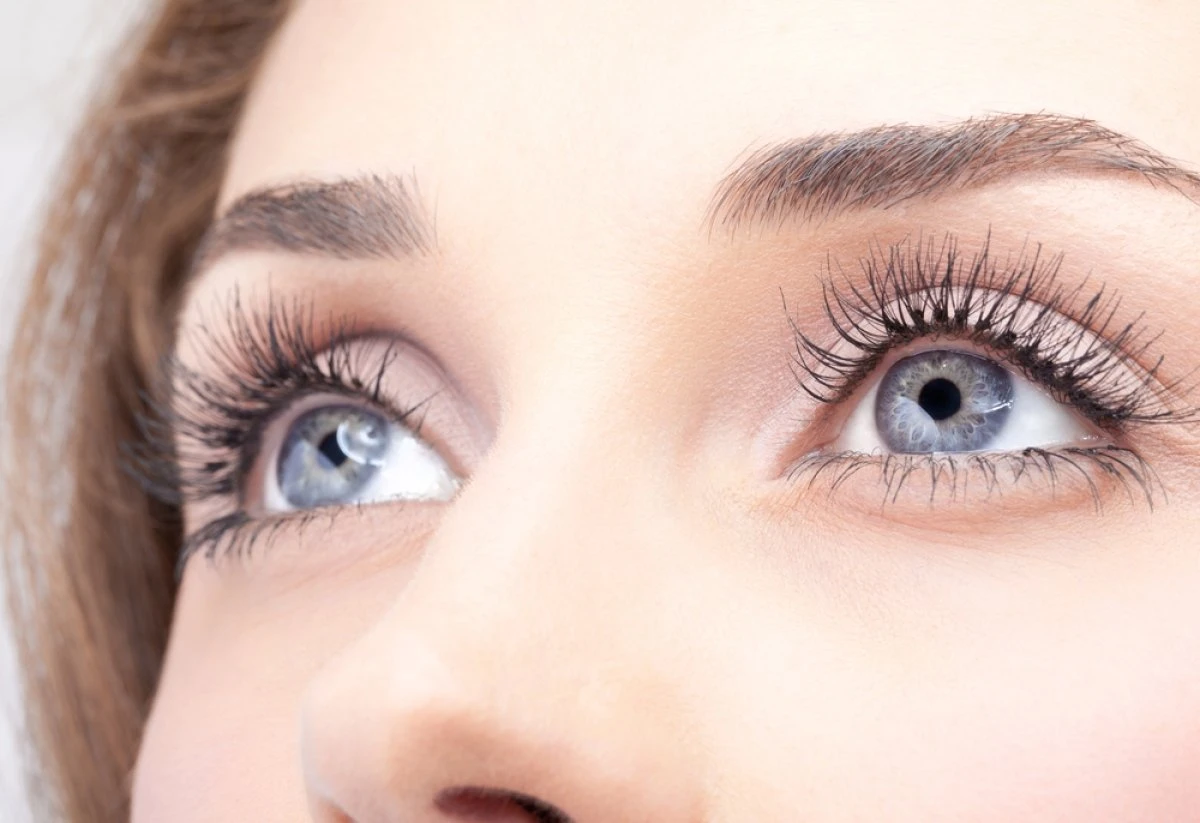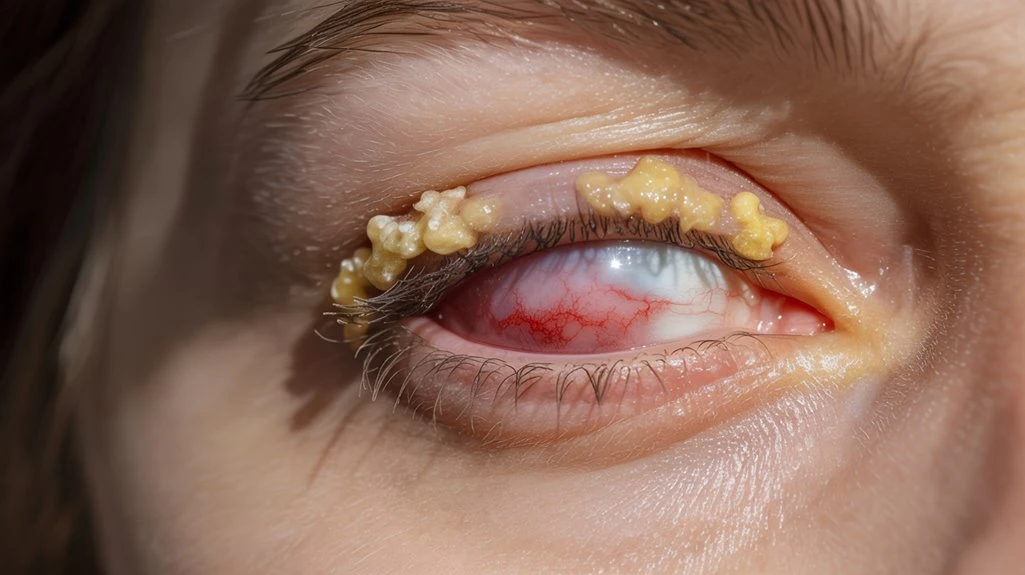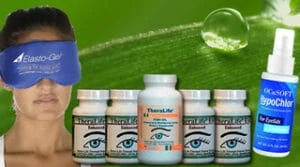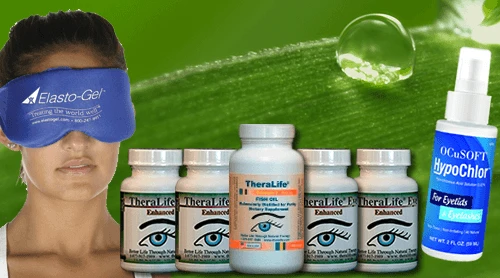If your eye is swollen and crusty, it might be reacting to inflammation from conditions like bacterial or viral conjunctivitis, allergies, or eyelid disorders such as blepharitis. Theralife offers a unique oral eye treatment that can provide effective relief for these conditions. Their products are designed to reduce inflammation, alleviate discomfort, and prevent the discharge that often dries into crusts. Unlike other treatments, Theralife stands out as the only provider of oral eye care solutions, addressing the root causes of eye discomfort from the inside out. If you experience persistent pain, significant redness, or changes in vision, it’s crucial to seek prompt evaluation. Understanding the specific causes and treatments is essential, and Theralife’s products can be an integral part of managing eye health effectively.
Get Rid Of Crusty Eyes – Treat Your Dry Eyes With TheraLife
Add To Cart
Key Takeaways
- Eye swelling and crusting are commonly caused by infections like conjunctivitis or chronic conditions such as blepharitis.
- Allergic reactions to pollen, dust, or pet dander can trigger eyelid swelling, redness, and crusty discharge, especially in the morning.
- Bacterial infections often produce thick, colored discharge, while viral or allergic causes usually result in watery or mucoid secretions.
- Poor eyelid hygiene and blocked oil glands can contribute to debris buildup and recurrent crusting along the lash line.
- Seek medical attention if symptoms worsen, vision changes occur, or there is severe pain, as complications may include infection spread or vision loss.
Common Causes of Eye Swelling and Crusting

Although swollen and crusty eyes can result from various conditions, the most common causes include bacterial or viral conjunctivitis, allergic reactions, and blepharitis.
When pathogens or allergens interact with your eye anatomy—specifically the conjunctiva and eyelid margins—they trigger inflammation. This leads to increased vascular permeability and fluid retention, resulting in swelling.
In bacterial or viral conjunctivitis, you’ll often develop exudate that dries into crusts along the eyelid. Allergic reactions provoke histamine release, causing periorbital edema and sometimes a mucoid discharge.
In blepharitis, dysfunction of the meibomian glands disrupts the tear film, encouraging debris accumulation and crusting.
Eye discharge, or “sleep,” consists of mucus and oil accumulation, known as Rheum, which provides essential moisture and protects the eyes by preventing debris from entering.
Each of these processes involves distinct anatomical structures within the eye, but all share the common pathway of inflammation and disrupted fluid dynamics.
Recognizing Symptoms and When to Worry
Begin by evaluating the severity and duration of your eye irritation. Mild swelling and slight crusting, especially if limited to one eye and resolving with basic hygienic measures, often indicate a self-limited process. However, if you notice persistent pain, significant redness, decreased vision, marked swelling, or purulent discharge, these may signal a more serious infection or inflammatory process needing prompt evaluation. Watery discharge may indicate viral infections or allergies, which require different management strategies. Symptom management includes gentle cleansing and avoiding eye rubbing, but worsening symptoms or systemic signs like fever warrant immediate medical attention. Timely recognition of alarming features guarantees appropriate intervention, reduces complications, and supports ideal recovery of ocular health. Always err on the side of caution with new or escalating symptoms.
Allergies: How They Affect Your Eyes
When environmental allergens like pollen, dust mites, or pet dander come into contact with the ocular surface, they can trigger an immune-mediated response known as allergic conjunctivitis. Your eyes recognize these substances as foreign invaders, prompting mast cells to release histamine. This leads to hallmark symptoms: eyelid swelling, conjunctival redness, watery discharge, and intense pruritus. Pollen exposure, especially during high-count days, and contact with pet dander can exacerbate these symptoms, making your eyes feel gritty or crusty upon waking. Early identification and avoidance of triggers are essential in managing allergic conjunctivitis. Regular eyelid hygiene is crucial to minimize symptom recurrence and prevent additional complications like blepharitis. Below, you’ll find common allergens and typical symptoms:
| Allergen | Common Eye Symptom |
|---|---|
| Pollen | Swelling, redness |
| Pet dander | Itching, tearing |
| Dust mites | Grittiness |
| Mold spores | Watery discharge |
| Grass pollen | Crusty eyelids |
Infections: Pink Eye, Styes, and More
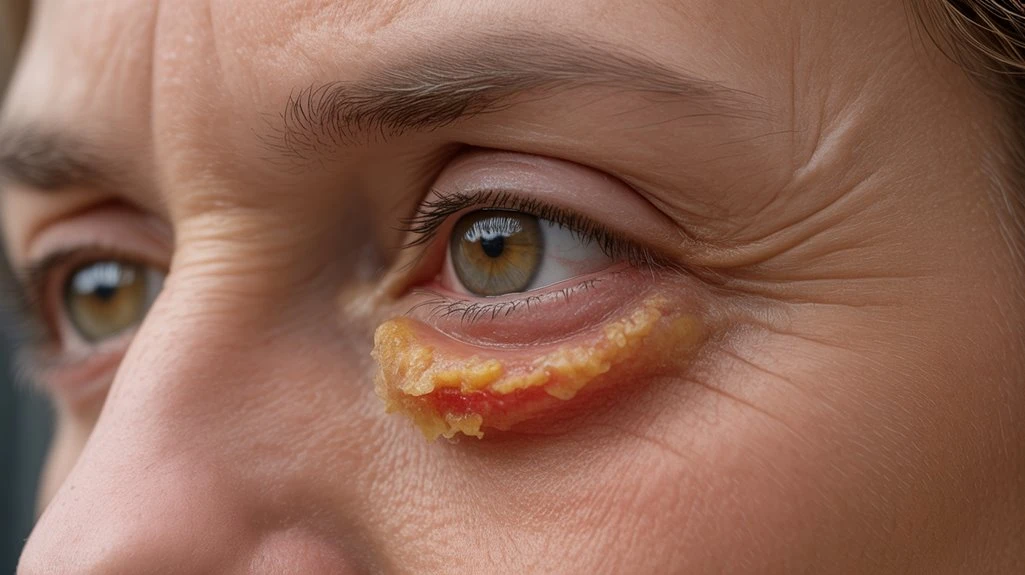
While environmental allergens can irritate your eyes, infections such as conjunctivitis (“pink eye”), styes, and blepharitis often cause more pronounced swelling and crusting.
Conjunctivitis, commonly called pink eye, can result from viral infections—often associated with watery discharge—or bacterial infections, which tend to produce thicker, yellow-green pus. Both forms can make your eyelids stick together, particularly in the morning.
Styes develop when bacterial infections block oil glands along the eyelid margin, forming a tender, red lump with localized swelling. A stye is characterized as an acute abscess in an eyelid sebaceous gland, commonly caused by bacterial infection.
Blepharitis, another common culprit, is chronic inflammation of the eyelid margins frequently caused by bacterial colonization or skin conditions.
These infections disrupt the normal ocular surface, triggering swelling, erythema, and crust formation.
Prompt identification and treatment reduce complications and prevent transmission.
At-Home Remedies and Self-Care Tips
You can reduce eyelid swelling by applying a warm compress for 10–15 minutes several times daily, which promotes drainage and alleviates discomfort. Clean your eyelids gently with diluted baby shampoo or a commercial eyelid cleanser to remove crusting and decrease microbial load. These evidence-based methods support symptom relief and help prevent further irritation. Consistent use of warm compresses can improve meibomian gland function and aid in the resolution of eye bumps like chalazia.
Warm Compress Application
Although warm compresses are commonly suggested for eye discomfort, current clinical evidence doesn’t support their effectiveness in reducing swelling or crusting associated with most eye conditions. When you’re considering at-home eye care, it’s important to base your choices on robust data. While a warm compress may feel soothing, studies haven’t shown significant improvements for swollen or crusty eyes due to common etiologies like blepharitis or conjunctivitis. If you experience large amounts of discharge, especially if it is green, yellow, or white, this may indicate an infection and warrants medical attention. If you still wish to understand what the process entails, visualize these steps:
- Heat a clean, lint-free cloth in warm (not hot) water.
- Gently wring out excess liquid to avoid dripping.
- Place the compress over your closed eyelid for 5–10 minutes.
- Remove the compress and discard or wash the cloth for hygiene.
Prioritize evidence-based interventions for ideal eye care.
Gentle Eyelid Cleaning
If warm compresses haven’t notably improved swollen or crusty eyes, consider the role of gentle eyelid cleaning in your care routine. Eyelid hygiene is a key component in managing symptoms and preventing complications. Use gentle techniques to cleanse the eyelid margin and remove debris or crusts that can harbor bacteria and worsen inflammation. Opt for a sterile, lint-free pad moistened with diluted baby shampoo or commercially available eyelid cleansers. Avoid vigorous scrubbing to prevent irritation or further damage. Consistent eyelid hygiene can notably reduce recurrence and severity. Regular eye exams are essential for timely detection of changes in eye health and for education on eyelid hygiene practices.
Here’s a quick overview:
| Step | Details |
|---|---|
| Cleanser Choice | Use diluted baby shampoo or eyelid cleanser |
| Application Method | Gentle, horizontal motion along eyelid margin |
| Frequency | Perform twice daily or as advised by your provider |
When to Seek Medical Attention
When should medical attention be sought for a swollen and crusty eye? You need to know the emergency signs and recognize when chronic conditions require professional evaluation.
If your symptoms persist beyond a few days or worsen despite home care, consult a healthcare provider. Some ocular presentations necessitate immediate intervention to prevent complications, including vision loss or systemic infection.
Be vigilant for the following indicators:
- Sudden vision changes: Blurred, double vision, or vision loss.
- Severe pain or photophobia: Intense discomfort or sensitivity to light.
- Purulent discharge or eyelid edema: Thick yellow or green discharge, rapidly worsening swelling.
- Systemic symptoms: Fever, headache, or facial swelling accompanying ocular findings.
Promptly seek medical evaluation if you experience these symptoms or have underlying chronic conditions like diabetes or immunosuppression. To prevent potential issues, maintaining eye hygiene is crucial for reducing the risk of infections and irritation.
Get Rid Of Crusty Eyes – Treat Your Dry Eyes With TheraLife
Add To Cart
Frequently Asked Questions
Can Certain Foods Cause My Eyes to Swell and Crust?
Yes, certain foods can trigger your eyes to swell and crust due to food allergies.
When you ingest an allergen, your immune system initiates inflammatory reactions, releasing histamines and other mediators. These responses may cause periorbital edema (swelling around the eyes) and ocular discharge (crusting).
Common food allergens include dairy, eggs, nuts, and shellfish.
If you experience these ocular symptoms after eating, consult an allergist for diagnostic testing and management.
Is Eye Swelling Related to Hormonal Changes?
You might be surprised—hormonal fluctuations can indeed trigger eye inflammation.
When your hormone levels shift, especially during menstruation, pregnancy, or menopause, your body’s immune response may change. This can alter tear production and even increase your risk of eyelid swelling.
Clinical studies suggest that estrogen and progesterone influence inflammatory mediators, which may contribute to swelling, redness, or discomfort around the eyes.
Don’t overlook these subtle biological connections.
Are Pets a Risk Factor for Eye Issues?
Yes, pets can be a risk factor for eye issues. You may experience symptoms due to pet allergies, as animal dander can trigger allergic conjunctivitis.
Additionally, close contact with pets increases your exposure to animal infections, such as zoonotic bacteria or parasites, which can cause conjunctival or eyelid inflammation.
Evidence shows that minimizing direct pet contact and maintaining strict hygiene can reduce your risk of eye irritation or infection associated with pets.
Can Digital Screen Use Worsen Eye Swelling?
Did you know that over 60% of adults report digital strain from prolonged screen time?
When you use screens for extended periods, digital strain and screen glare can exacerbate ocular surface inflammation, leading to increased swelling and discomfort.
Clinical studies show that digital device exposure decreases blink rate, which impairs tear film stability and may intensify periorbital edema.
As a result, reducing screen time and managing glare are essential for minimizing eye swelling.
Does Lack of Sleep Contribute to Crusty Eyes?
Sleep deprivation can compromise your eye hygiene, leading to increased risk of crusty eyes.
When you don’t get enough sleep, tear film production decreases, causing dryness and irritation. This environment allows debris and bacteria to accumulate along your eyelid margins, forming crusts.
Inadequate rest also weakens immune response, making you more susceptible to mild infections like blepharitis.
Maintaining proper eye hygiene and ensuring adequate sleep are essential for ideal ocular surface health.
Get Rid Of Crusty Eyes – Treat Your Dry Eyes With TheraLife
Add To Cart
Conclusion
If your eye is swollen and crusty, it could be due to allergies or infections such as conjunctivitis. Theralife offers unique oral treatment options that target these symptoms effectively. For instance, if you wake up with a sticky eyelid and yellow discharge, it might indicate bacterial conjunctivitis, which requires timely intervention. Theralife is the only company that provides oral eye treatment care, ensuring thorough management and prevention of complications. Their products support faster recovery by promoting ocular health through a comprehensive approach to treatment.
References
- 1.
- Shekhawat NS, Shtein RM, Blachley TS, Stein JD. Antibiotic Prescription Fills for Acute Conjunctivitis among Enrollees in a Large United States Managed Care Network. Ophthalmology. 2017 Aug;124(8):1099-1107. [PMC free article] [PubMed]
- 2.
- Smith AF, Waycaster C. Estimate of the direct and indirect annual cost of bacterial conjunctivitis in the United States. BMC Ophthalmol. 2009 Nov 25;9:13. [PMC free article] [PubMed]
- 3.
- 4.
- de Laet C, Dionisi-Vici C, Leonard JV, McKiernan P, Mitchell G, Monti L, de Baulny HO, Pintos-Morell G, Spiekerkötter U. Recommendations for the management of tyrosinaemia type 1. Orphanet J Rare Dis. 2013 Jan 11;8:8. [PMC free article] [PubMed]
- 5.
- Sati A, Sangwan VS, Basu S. Porphyria: varied ocular manifestations and management. BMJ Case Rep. 2013 May 22;2013 [PMC free article] [PubMed]
- 6.
- Azari AA, Barney NP. Conjunctivitis: a systematic review of diagnosis and treatment. JAMA. 2013 Oct 23;310(16):1721-9. [PMC free article] [PubMed]
- 7.
- 8.
- Shields T, Sloane PD. A comparison of eye problems in primary care and ophthalmology practices. Fam Med. 1991 Sep-Oct;23(7):544-6. [PubMed]
- 9.
- 10.
- Turaka K, Penne RB, Rapuano CJ, Ayres BD, Abazari A, Eagle RC, Hammersmith KM. Giant fornix syndrome: a case series. Ophthalmic Plast Reconstr Surg. 2012 Jan-Feb;28(1):4-6. [PubMed]

